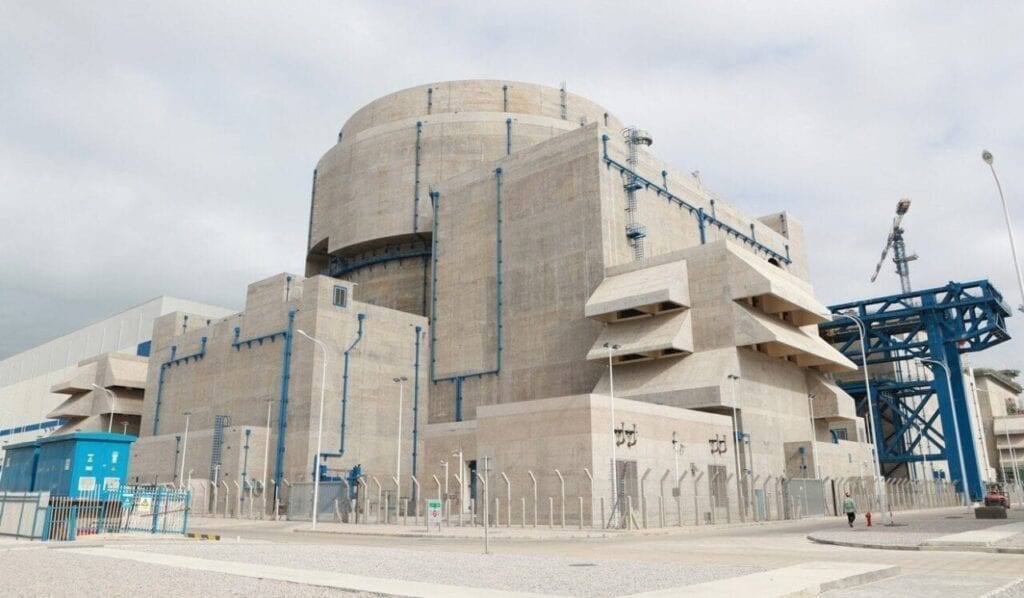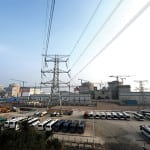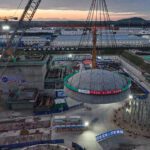The first of two new reactors at a nuclear power plant in China has entered commercial operation, becoming that country’s 50th operating reactor, according to the China Nuclear Energy Association (CNEA).
Hualong One is a third-generation pressurized water reactor, developed by China National Nuclear Corp. (CNNC) and China General Nuclear Power. It is the fifth reactor now operating at Fujian Province’s Fuqing Nuclear Power Plant. It began commercial operation on Jan. 30 after being connected to the grid on Nov. 27 of last year. Construction of the reactor began in 2015.

A second Hualong One reactor at Fuqing is scheduled to be completed this year.
“This marks that China has mastered independent third-generation nuclear power technology following the United States, France, Russia and others,” CNNC said in a statement on the company’s official WeChat account. The Hualong One units are designed with power generation capacity of 1,161 MW, with a 60-year lifecycle.
CNNC has touted Hualong One as a reactor in which about 90% of the equipment used, including all elements of the core, was made in China. “We must not only export our own nuclear power but also build it according to our own standards, so that we can’t be controlled by others,” chief designer Xing Ji said in a statement.
Two Containment Layers
The Hualong One reactor has two layers of containment; CNNC calls it one of the safest reactors in the world. The company said the project at Fuqing makes China an “advanced player in nuclear power.”
Chinese President Xi Jinping has said he considers nuclear power a top priority under the government’s “Made in China 2025” initiative, a measure mean to support the country’s high-tech industries.
China, the world’s third-largest producer of nuclear power behind the U.S. and France, has about 52 GW of generation capacity from its 50 operating reactors. The CNEA has said another 19 reactors, which could add another 21 GW of generation capacity, are under construction in the country.
Chen Hua, CNEA vice president, in September of last year said that by 2025 China expects to have 70 GW of operating nuclear power generation capacity, with an additional 40 GW under construction. Officials have said China expects nuclear power will account for about 10% of the country’s total electricity generation capacity by 2035 as the country moves away from coal-fired power, long the country’s dominant source of electricity.
Coal-fired power accounts for about two-thirds of the country’s generation mix. China capped total coal-fired generation at 1,100 GW last year, though the country still has hundreds of coal plants in its development pipeline.
Net-Zero Carbon Goal
President Xi in September 2020 announced the country had a goal to cut its net carbon footprint to zero by 2060, but analysts have said coal-fired power is important to the country’s economic recovery after the coronavirus pandemic.
The country paused its nuclear power program between 2016 and 2018, as the government did not approve construction of any new reactors during that period. Officials have said that was in part due to continuing concerns about nuclear power in the wake of the 2011 Fukushima disaster in Japan, and the slow progress in the development and design of third-generation reactors, including the Hualong One, and the AP1000 from Westinghouse.
Two AP1000 reactors are being used in the two-unit expansion of the Vogtle nuclear power plant in Georgia. That project, which at present is the first new large U.S. nuclear power plant construction since the late 1980s, could see startup of the first of those two units by the end of this year.
—Darrell Proctor is associate editor for POWER (@POWERmagazine).










